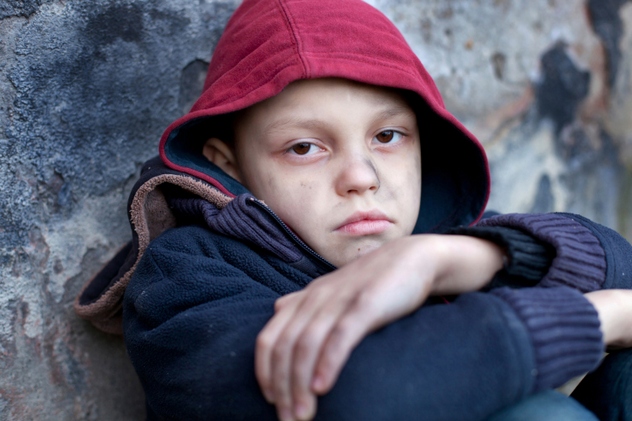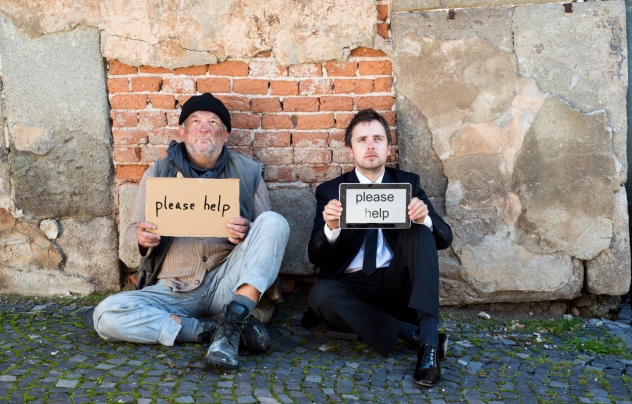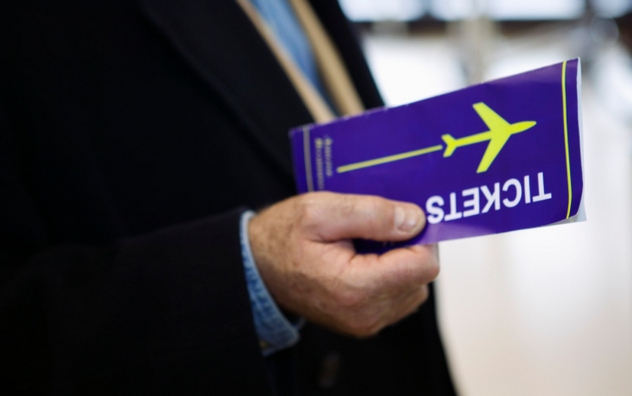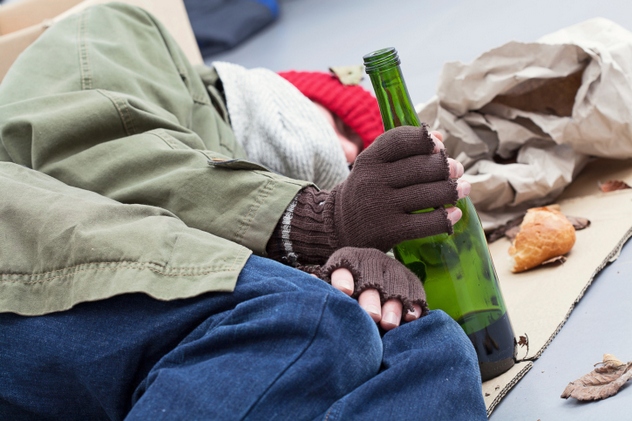 Weird Stuff
Weird Stuff  Weird Stuff
Weird Stuff  Our World
Our World 10 Ways Your Christmas Tree Is More Lit Than You Think
 Movies and TV
Movies and TV The 10 Coolest Stars to Set Sail on The Love Boat
 History
History 10 Things You Didn’t Know About the American National Anthem
 Technology
Technology Top 10 Everyday Tech Buzzwords That Hide a Darker Past
 Humans
Humans 10 Everyday Human Behaviors That Are Actually Survival Instincts
 Animals
Animals 10 Animals That Humiliated and Harmed Historical Leaders
 History
History 10 Most Influential Protests in Modern History
 Creepy
Creepy 10 More Representations of Death from Myth, Legend, and Folktale
 Technology
Technology 10 Scientific Breakthroughs of 2025 That’ll Change Everything
 Weird Stuff
Weird Stuff Ten Bizarre Facts About The Doge Meme
 Our World
Our World 10 Ways Your Christmas Tree Is More Lit Than You Think
 Movies and TV
Movies and TV The 10 Coolest Stars to Set Sail on The Love Boat
Who's Behind Listverse?

Jamie Frater
Head Editor
Jamie founded Listverse due to an insatiable desire to share fascinating, obscure, and bizarre facts. He has been a guest speaker on numerous national radio and television stations and is a five time published author.
More About Us History
History 10 Things You Didn’t Know About the American National Anthem
 Technology
Technology Top 10 Everyday Tech Buzzwords That Hide a Darker Past
 Humans
Humans 10 Everyday Human Behaviors That Are Actually Survival Instincts
 Animals
Animals 10 Animals That Humiliated and Harmed Historical Leaders
 History
History 10 Most Influential Protests in Modern History
 Creepy
Creepy 10 More Representations of Death from Myth, Legend, and Folktale
 Technology
Technology 10 Scientific Breakthroughs of 2025 That’ll Change Everything
10 Compelling Facts About Homelessness
Homelessness is an unfortunate affliction of every society. It would be easy to chalk the issue up to mere poverty, but there are dozens of different root causes. Sadly, it is often the most vulnerable among us who end up on the streets. Despite all manner of relief efforts, the problem seems to get worse and worse, even in the wealthiest areas. Below are 10 facts about homelessness—a compendium of tragedy with just a dash of hope.
10‘Things’
Even the most open-minded people in the world make comparisons between themselves and those around them. Our feelings toward people tend to be directly influenced by how capable and kind they seem to be. When judging others, an area of the brain called the medial prefrontal cortex (mPFC) becomes active, allowing us to decide with whom to empathize and to what degree.
In an article called “Dehumanizing the Lowest of the Low,” researchers Lasana T. Harris and Susan T. Fiske initiated experiments on the neural perception of different people when confronted with stimuli based on warmth and competency. They found that when viewing homeless people, which are seen as being low on both counts, the brain oftentimes treated them essentially as animals or objects.
This is worrying on any number of levels, particularly because this perception can easily be seen in society. One need look no further than the 2012 South By Southwest technology conference in Austin, Texas. Marketing agency BBH unveiled a strategy where they used homeless people as wandering 4G hotspots—a seemingly exploitative move that resulted in an ugly media backlash.
9Mythology

For many of us, Miami, Florida is a city defined by a thriving nightlife, golden beaches, and beautiful women. But this city is a study in contradictions, as Miami’s citizens reflect one of the greatest income disparities in the United States. There is a large homeless population, many of them children. Large numbers of kids do not attend school; they live in shelters or cardboard boxes and get by on scraps. They rarely attend church or watch cartoons or read books. Interestingly enough, in that vacuum, a vibrant mythology was established by the children of Miami, borrowing from elements of Christianity and Santeria, from folktales from around the world.
A 1997 article by Lynda Edwards, “Myths Over Miami,” captures this well: God seems to have abandoned the Earth for parts unknown to flee an onslaught of demons. One of the most feared demons is La Llorona (“The Crying Woman”) or Bloody Mary—an entity borrowed from Latin American mythology. La Llorona weeps bloody tears and feeds on children’s deaths and misery. She is counterbalanced by another creature, The Blue Lady—a variant of the Santeria ocean goddess Yemana. Sadly, the legends do not mention a Heaven, only an encampment of angel warriors in the Everglades, their ranks constantly swelling through tragedy and the deaths of innocents.
In 2000, Disney bought the rights to “Myths Over Miami.” It was meant as a vehicle for horror author Clive Barker, responsible for such gory fare as the Hellraiser franchise and the Candyman movies. Although the myths may seem overly fantastic, establishing the veracity of Edwards’s reports at this point would be nearly impossible. Not only does Edwards refrain from using last names, but the children she interviewed in the ’90s would now be approaching 30. The intriguing story has never been outright corroborated or debunked, but like many things, it’s probably best taken with a pinch of salt.
8Brain Injury

It would be a mistake to try and isolate any single root cause or demographic for homelessness. The problem is vastly more complicated. With that said, there are several groups that are tragically overrepresented on the streets, including veterans and those with mental illness. But a recent study done in Toronto indicates another segment of the population likely to end up homeless—those who have suffered a traumatic brain injury.
The study, conducted by researchers at St. Michael’s Hospital, focused on 111 homeless men ranging in age from 27 to 81 years old. It found that 45 percent had at least one traumatic brain injury during their lives. A shocking 87 percent had their injury before they became homeless, mostly during their teenage years. It is believed that brain damage during this crucial period of development can alter a person’s behavior for the rest of their lives.
Some of the traumatic brain injuries suffered by participants were mild, like concussions from playing sports or blackouts from substance abuse. Others were far more severe, including long-term damage from car accidents or assaults.
7Homeless To Harvard

Born in 1980 to cocaine addicts who would both later contract HIV, Liz Murray seemed destined for a life of tragedy. She had a rough childhood, being dragged here and there as her family split up, spending stretches being homeless and rarely attending school. She earned money bagging groceries when she was just nine years old. Her mother died of AIDS in 1996. But unlike many stories of homeless children that end in tragedy, Liz managed to turn her life around.
She graduated high school in just two years, using a friend’s borrowed address, and received a scholarship from the New York Times to attend Harvard University. She became the subject of a Lifetime television special “From Homeless to Harvard.” However, Liz stresses that much of her success stemmed from members of the community reaching out and helping her, saying: “People I didn’t know showed up like angels to help me.” Murray’s father died of AIDS in 2006. In 2010, she published a bestselling memoir Breaking Night: A Memoir of Forgiveness, Survival, and My Journey From Homeless To Harvard, a harrowing tale of survival despite the odds.
6Lee Halpin
In 2013, British journalist and filmmaker Lee Halpin set out to do an investigative piece on homelessness. While many might be content to accomplish this through interviews and research from afar, Halpin set out to immerse himself personally in the project—much as “gonzo journalist” Hunter S. Thompson placed himself as the central character in his reports. Halpin decided to live rough on the streets of his native Newcastle. Unfortunately, this experiment would end in tragedy.
Halpin began on April 1, 2013. It was brutally cold for that time of year, and friends warned him to be careful. Soon, he came across a homeless man named Danny, who would act as his mentor, advising Halpin to roughen up his handsome appearance if he wanted to fit in on the mean streets. Lee spent that night sleeping at the top of a staircase. On April 2, he met up with Danny again, and the two decided to spend that evening in an abandoned building. When Halpin’s cameraman showed up the following morning, Danny advised him that Lee had died during the night.
The unexpected passing of a 26-year-old man in seemingly good health drew much suspicion, but the medical examiner was baffled. Halpin hadn’t died of an overdose (he’d had a few beers the night before, but his blood alcohol content was low), nor did he show signs of hypothermia, despite the temperature. His body did not show any signs of foul play. Danny reported Lee claiming he was too hot and sweating a little. Finally, it was determined that he’d died from the rare adult sudden death syndrome.
5One-Way Tickets

Just as there is no blanket “cause” of homelessness, there is no blanket “cure,” either. Shelters can offer palliative care, but they are very expensive to run and maintain. In New York City, it costs upward of $36,000 a year to shelter a family. To deal with this problem, a program has been instituted that will send homeless people with resources or family elsewhere on a one-way trip to nearly anywhere they want. The program, which costs half a million dollars a year, is helmed by the Department of Homeless Services. It has sent people as far away as South Africa and France, but the most typical destinations are Puerto Rico, Florida, Georgia, and the Carolinas. One-way ticket projects have also been implemented in other areas, including Baton Rouge and San Francisco. Hawaii’s program aims to send eligible participants back to the mainland.
Not surprisingly, these programs have generated significant controversy among homeless advocacy groups. They claim the one-way programs are just a “cosmetic” solution, and that they sweep the true problem under the carpet for another location to deal with.
4Internet Cafe Kids
Japanese society had been largely unaffected by homelessness until the Japanese real estate asset price bubble of 1986–1991, which continues to ravage the economy to this day. Coupled with the fact that the cost of living is relatively high—Tokyo is one of the world’s most expensive cities—homelessness has become a growing problem.
While many of these people live on the streets, others have found a novel solution to the problem—residing in Internet cafes. These cafes consist of a tiny personal room outfitted with a reclining chair or mat, a television, and a computer. Free soft drinks are a common amenity, as well as manga collections and paid showers.
They can be rented out for the night, generally for under $20, a fraction of what you’d have to shell out for an apartment. Thus, thousands of people, including young adults and day laborers that make enough just to subsist, live like refugees in one of the world’s most advanced countries.
3Silicon Valley
When we think of Silicon Valley in the San Francisco Bay Area, we naturally think of prosperity. Massive tech firms like Google, Facebook, Yahoo!, and Apple are headquartered there. Unfortunately, prosperity can have its downsides. The average rent in the area is more than twice the national average, pushing out all but the most wealthy residents. Even for those with good jobs, temporary loss of employment can quickly chew through savings. This leaves people with few options, especially the elderly, whose Social Security benefits are not nearly enough to cover the cost of living here.
Some communities, like Palo Alto, California, have recently passed legislation to make it illegal for people to live in their cars. Through this and other means, many of Silicon Valley’s homeless have been driven from the area and left to take up residence in a shantytown of San Jose called “The Jungle”—a terrifying, third world–style camp rife with drugs and violence.
2Wet Houses

It is certainly no surprise that many homeless people struggle with alcoholism. This is often a major hurdle in allowing them to get help, as most shelters have strict rules, including bans on alcohol and curfews. Many alcoholics are so hopelessly addicted that they prefer to stay on the streets rather than deal with restrictions. Even worse, withdrawal from alcohol can be fatal without proper treatment.
To address this issue, a study was undertaken in Seattle with the establishment of a so-called “wet house”: a shelter where residents are allowed to drink. Rather than attempting to cure the participants of their addiction, the program was aimed at “harm reduction.”
The theory was that allowing alcoholics to drink diminished some of the “forbidden fruit” appeal. The results were remarkable. While no one completely sobered up, their alcohol consumption dropped dramatically. The average participant had been downing 20 drinks a day at the beginning of the study. Within two years, the number dropped to just 12. This still constitutes a dangerous intake, but the health of the residents improved markedly.
Many are unconvinced that allowing people to essentially drink themselves to death is the right approach, but residents assert that the wet houses allow them to salvage some sense of worth. Dave, a resident of St. Anthony Residence (a wet house in Minnesota) stated, “If I’m going to die, I don’t want it to be under a bridge. I agreed to come here because I want to hold onto the little bit of dignity that I have left.”
1Mole People
In 1993, Jennifer Toth wrote a controversial book about homeless people living in subterranean New York. Titled The Mole People: Life in the Tunnels Beneath New York City, the book tells the story of what Toth estimates are thousands of people dwelling in abandoned subway tunnels beneath the Big Apple. She discusses lunatics that never see the light of day, complex societies, and a man she witnessed killing and eating a sewer rat.
Since the book’s publication, many of the “facts” discussed therein have been refuted, particularly by New York rail expert Joseph Brennan, who points out many of its geographical inaccuracies. Of course, it is impossible to corroborate Toth’s stories of all the people she supposedly encountered beneath the city, but it can probably be reasonably assumed that it is a roundly sensationalized account, much like every movie you’ve ever seen that is “based on a true story.”
However, there clearly are subterranean dwellers in cities across the world. One large population is secreted in the flood tunnels beneath Las Vegas, where they escape the oppressive heat.
Mike Devlin is an aspiring novelist.








